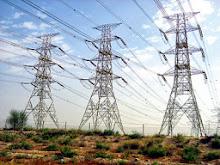How choosing a cable ?????
Cable types
When choosing a cable
one of the most important factors is the temperature attained by its insulation;
if the temperature is allowed to exceed the upper design value, premature
failure is likely. In addition, corrosion of the sheaths or enclosures may
result. For example, bare conductors such as busbars may be operated at much
higher temperatures than most insulated conductors.
However, when an
insulated conductor is connected to such a high temperature system, its own
insulation may be affected by heat transmitted from the busbar, usually by
conduction and by radiation. To ensure that the insulation is not damaged:
either the operating
temperature of the busbar must not exceed the safe temperature for the
insulation,
or the conductor
insulation must be removed for a suitable distance from the connection with the
busbar and replaced with beat resistant insulation (see {Fig 1.1}).
It is common sense that
the cable chosen should be suitable for its purpose and for the surroundings in
which it will operate. It should not be handled and installed in unsuitable
temperatures. P.V.C. becomes hard and brittle at low temperatures, and if a
cable insulated with it is installed at temperatures below 5°C it may well
become damaged.
[522] includes a series
of Regulations which are intended to ensure that suitable cables are chosen to
prevent damage from temperature levels, moisture, dust and dirt, pollution,
vibration, mechanical stress, plant growths, animals, sunlight or the kind of
building in which they are installed. As already mentioned in {3.5.2}, cables must not produce, spread, or sustain
fire.
[527-01] contains six
regulations which are intended to reduce the risk of the spread of fire and are
concerned with choosing cables with a low likelihood of flame propagation (see
BS 4066, BS 476, BS EN 50085 and BS EN 50086). A run of bunched cables is a
special fire risk and cables in such a situation should comply with the
standards stated above.
|
|
Fig 1.1 Insulation of a cable connected to hot busbar
BS 6387 covers cables
which must be able to continue to operate in a fire. These special cables are
intended to be used when it is required to maintain circuit integrity for
longer than is possible with normal cables. Such cables are categorised with
three letters. The first indicates the resistance to fire alone (A,B,C and S)
and the second letter is a W and indicates that the cable will survive for a
time at 650°C when also subject to water (which may be used to tackle the
fire). The third letter (X, Y or Z) indicates the resistance to fire with
mechanical shock. For full details of these special cables see the BS.










0 comments:
Post a Comment